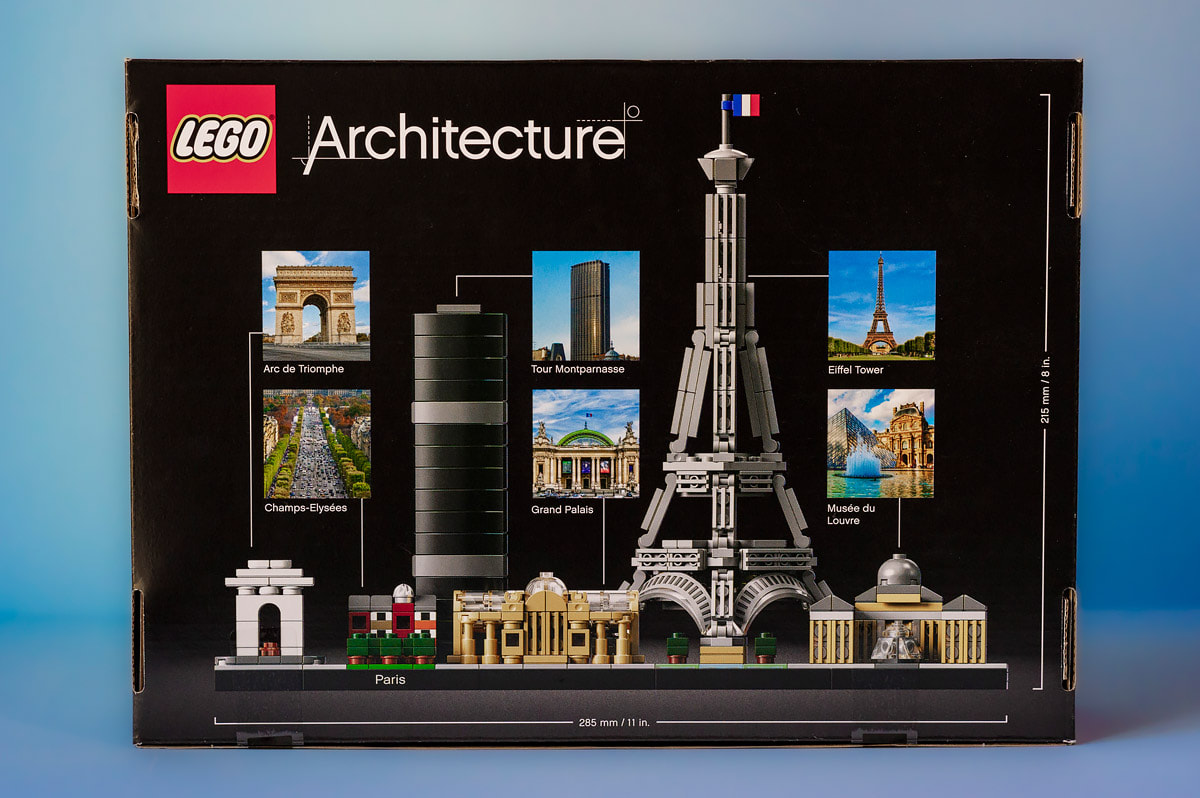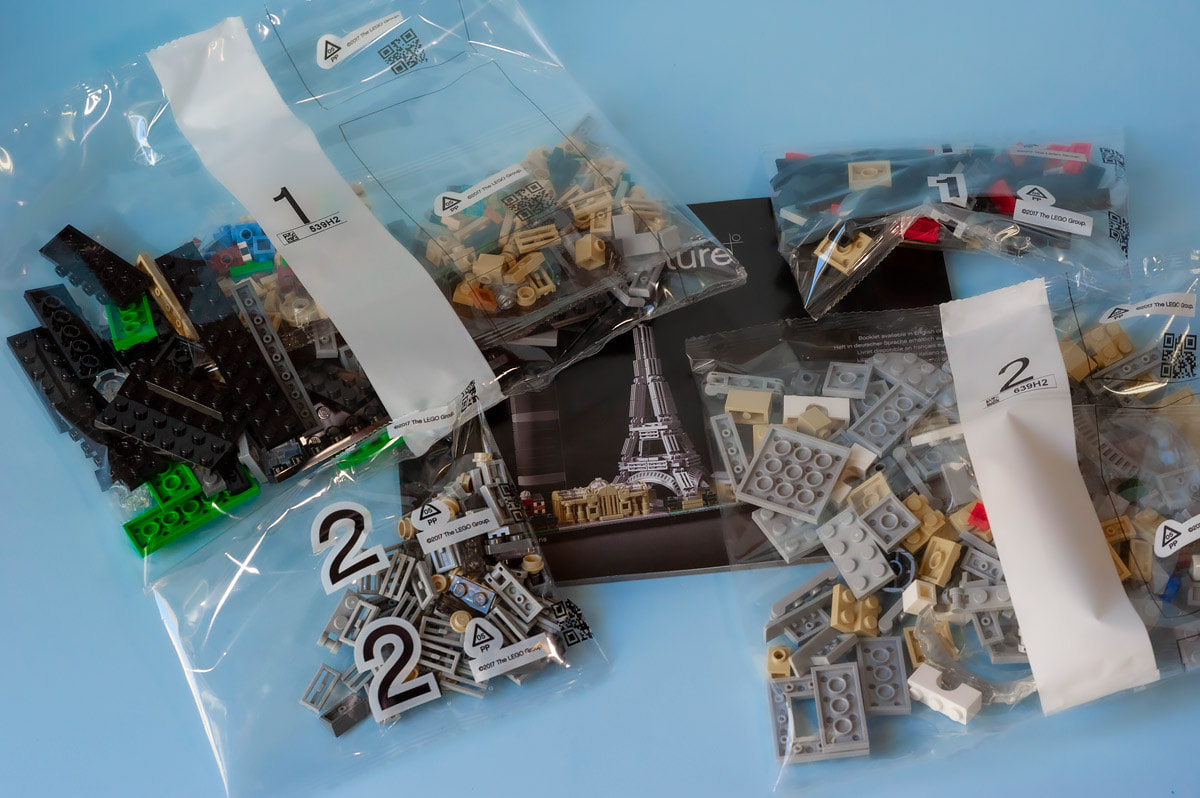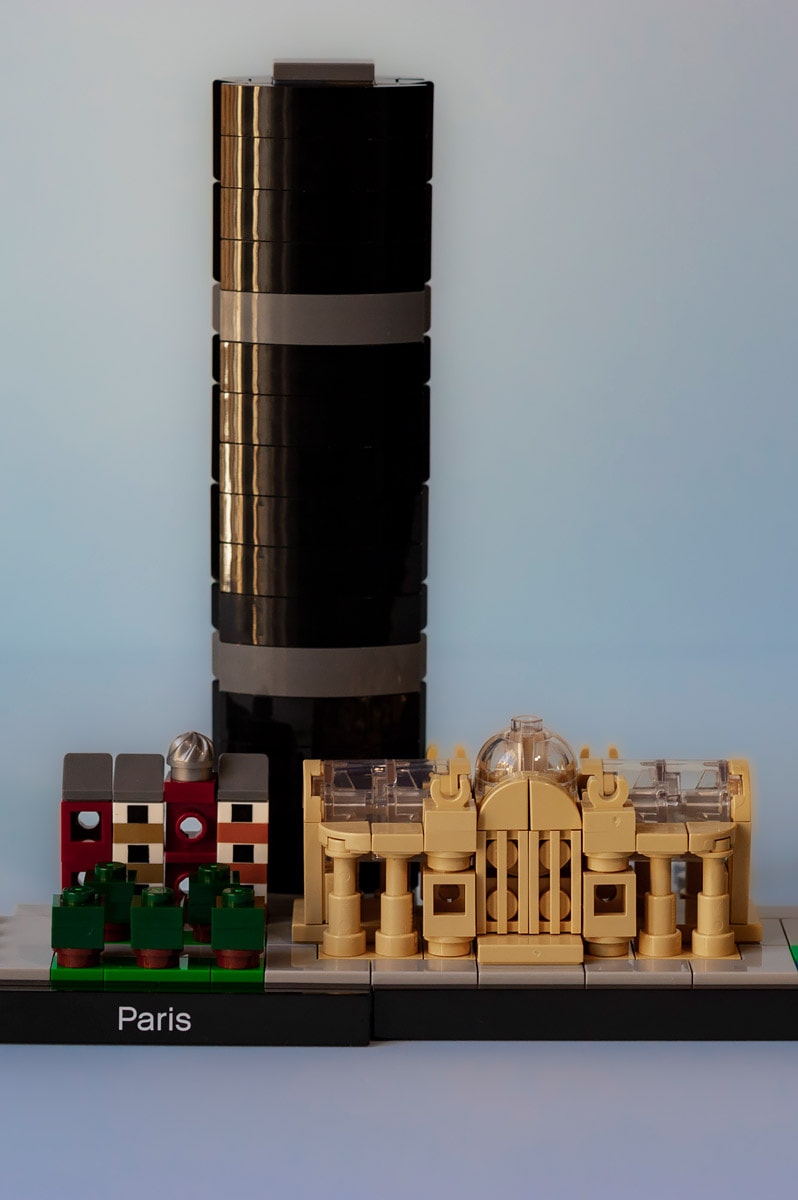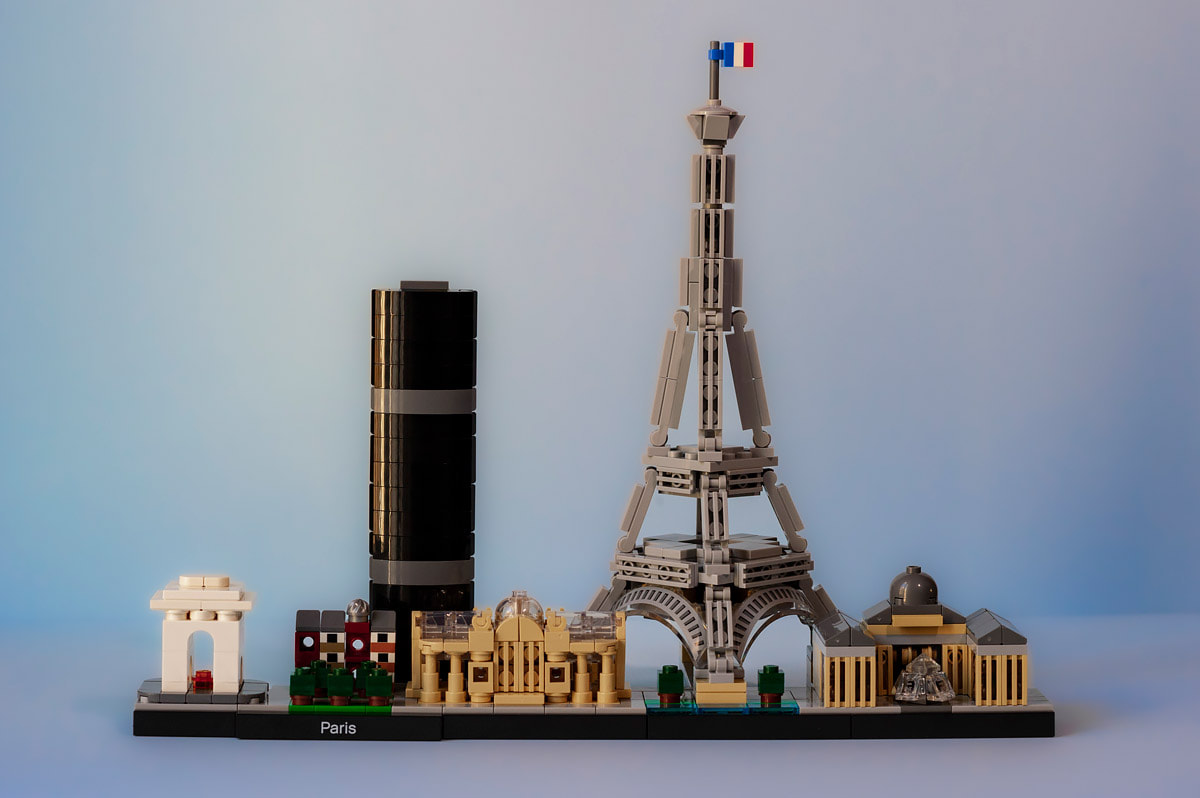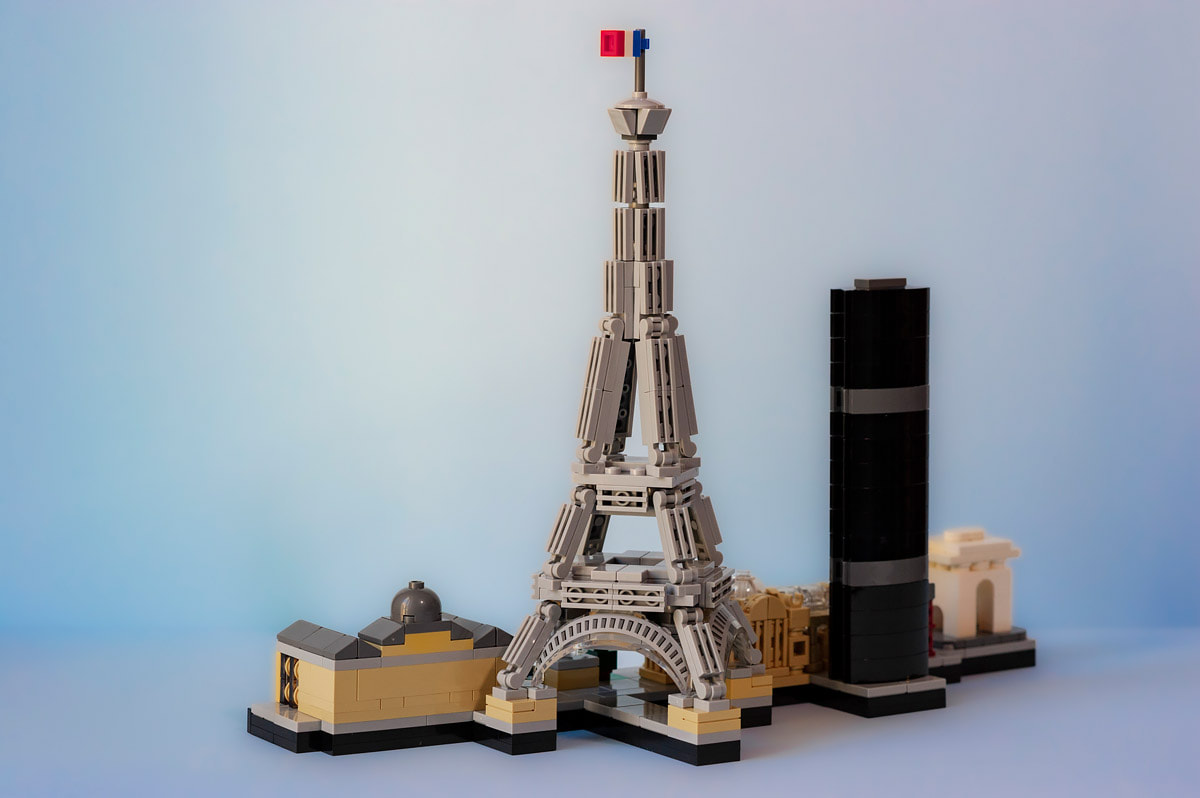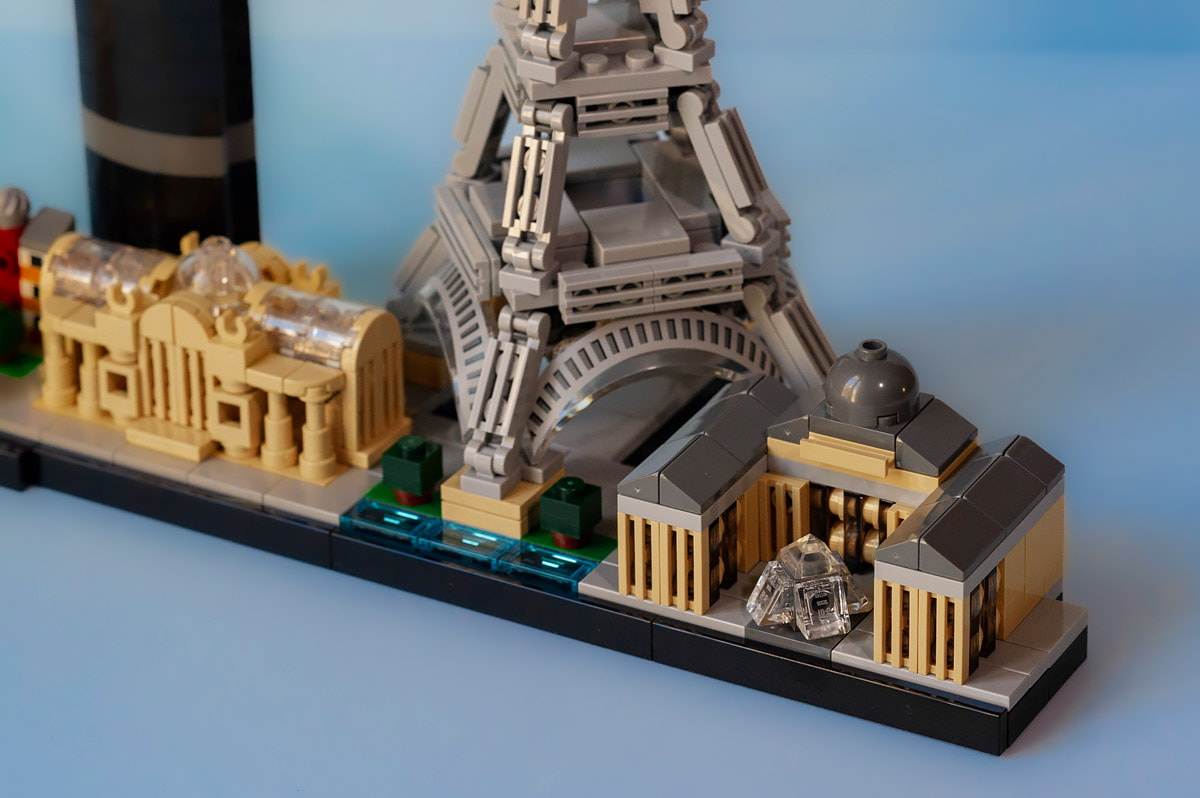By Antonio MalaraLast March I published “Lego New York City”, my second approach with an architecture lego and the first of a lego series that sees some cities of the world reproduced through their most important monuments. I bought this set about Paris almost at the same time as the one about New York but I only assembled it now precisely because as I wrote in that post, I didn't like lego New York City that much. In short, I found the set too two-dimensional with the monuments placed side by side horizontally, of which only the "Empire State Building" was reproduced accurately. Instead, what struck me about Paris was the contrast of colors between the gray of "Tour Eiffel" and the black of "Tour Montparnasse". Mainly looking at the set in photos, I liked this color scheme and the reproduction of the monuments themselves. However as I said, I was afraid that lego might disappoint me and I didn't want to associate Paris with a negative thing. In fact, I have very good memories of this city from the three times I've been there, so when I decided, I started assembling the lego with the hope that the set would be better than the one of New York. The monuments featured in the Paris set were “Tour Eiffel”, “Tour Montparnasse”, “Louvre”, “Grand Palais”, “Arc de Triomphe” and “Champs-Élysées”. Assembly ProcessInside the box there were two large envelopes and two smaller ones, two with the number 1 and two with the number 2. Inside the two large envelopes there were two other smaller ones, as usual. The numbering, as in the example in the instruction booklet, suggested assembling the set in two steps which, as always, I divide them in a parallel way, in this case on two different days. In day one I covered steps 1 through 62 and it took me about 12 minutes to place the bricks. I immediately noticed that for the first time in a set, there was an incredible variety of colors with shades like light green, light amaranth and dark blue that I had never seen before. From step 1 to 26 I mounted the support base, a very technical part with bricks which, if not placed correctly, could compromise the fixing of the individual buildings. I must say that assembling the base was also very relaxing both because it was articulated and because it was asymmetrical and with so many different colors. In step 30 I was struck by the types of bricks with which the "Grand Palais" was built, a structure completed in step 34 and which satisfied me with its details. It was a perfect miniature and in my opinion that was enough to add value to the set. In step 38 I began the construction of the "Tour Montparnasse" of which in step 56 I mounted the windows which were made up of an incredible number of bricks, all the same and also original. This process was very fast and with the assembly of the tower, I completed the content of envelopes number 1. However the total time I spent was 50 minutes. For envelope number 2, it took me 15 minutes to place the bricks, a little longer because there were probably many smaller pieces. From step 66 to 74 I mounted the "Louvre" which was very technical because it was made up of many small structures that were mounted separately and then assembled all together. In step 76 I realized that I made a mistake because I was missing a brick. I discovered that it was related to step 67 so I had to disassemble part of the "Louvre" recover and replace a brick and then continue. The nice thing was that the mistake I made was also signaled by a warning, this was proof that you always have to be careful with legos! From step 84 and up to the end, I assembled the "Tour Eiffel", a process that was more relaxing than technical, above all very interesting because I didn’t perceive that this type of structure could come out from that kind bricks. The time taken for envelopes number 2 was still 50 minutes. The final set of Paris is very beautiful and original, I was enthusiastic while building it and I was satisfied once it was finished. Compared to New York, this is more three-dimensional, with "Tour Eiffel" placed in three quarters and structures such as "Grad Palais" and "Louvre" which already had a structure that also developed in depth. These two buildings are of incredible detail in their reproduction in the lego version and are decidedly original. In addition to this, they also possess the personality of miniatures, in fact thanks to the details, these two structures seem to be part of a series of their own. “Arc de Triomphe” and the buildings that represent “Champs-Élysée” are the smaller structures but I must say that in any case they are much better reproduced than the equivalents of the New York set. As for the larger buildings, the two towers are as beautiful as in the photos and can also be appreciated from behind for how the set is made. I like the version of "Tour Eiffel" but I think "Tour Montparnasse" has a bit more personality in the lego version, this is because in fact in the original it is a simpler structure. Assembling this lego was very satisfying and gave me a new hope. After the disappointment of New York, I was a bit skeptical about this type of set. For the moment I have no plans to buy new ones but certainly thanks to Paris, I will do it with a bit more motivation. It will be an experiment to see if this type of set is actually up to the situation or if it was Paris, a city so unique that it maintains its beauty even if a lego set is not so good. Pictures: Antonio Malara
0 Comments
Leave a Reply. |


